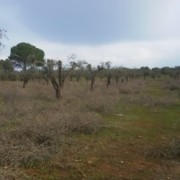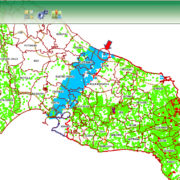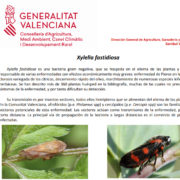Survey for the presence of Xylella fastidiosa subsp. pauca strain CoDiRO in the native flora of the Salento peninsula
Authors: O. Potere, L. Susca, F. Civita, S. Marullo, G. Loconsole, M. Saponari, D. Boscia, V. Savino, and P. La Notte
Type of contribution: Conference Abstract | Poster Presentation
Conference: 22th Congress of the Italian Society of Plant Pathology, 19-22 September 2016, Roma (Italy)
Keywords: Xylella, CoDiRO, Native flora
Corresponding author: O. Potere (UNIBA-DiSSPA)
Abstract
Xylella fastidiosa subsp. pauca strain CoDiRO was identified as associated with the “Olive Quick Decline Syndrome”, a devastating disease first observed in October 2013 in the southeastern Apulia. At least 350 plant species belonging to 75 families are reported as hosts of X. fastidiosa. These provide a source of inoculum for the vectors (xylem sap-feeding leafhoppers), thus playing a major epidemiological role and facilitating the entrenchment of the pathogen in the affected area. To investigate the CoDiRO strain host range in Salento, monthly samplings of the native flora of two heavily infected olive groves and of the side of adjacent roads were conducted from January 2014 onwards. One of the groves was grass-covered, whereas periodic tillage was performed in the other. Overall, more than 200 species of 50 families were sampled, observed for the presence of symptoms, photographed and identified. In the spring, Philaenus spumarius the main vector of the Salentinian X. fastidiosa strain was abundantly present on the herbaceous flora and shrubs at all sites. All samples, in pools of no less that 3 to 5 plants, were tested by DAS-ELISA and uncertain/positive results were verified by conventional and real time PCR. Bacterial isolates were obtained in axenic culture from some positive species. In a two-year survey, only Euphorbia terracina proved to be Xylella-positive among the herbaceous hosts, whereas some shrubs and subshrubs i.e. Asparagus acutifolius, Cistus creticus, Myrtus communis, Phillyrea latifolia, Rhamnus alaternus and Rosmarinus officinalis were infected. These results provide as strong indication that, rather than weeds, are the perennial shrubs that play a major role in the epidemiology of the X. fastidiosa in this area.







